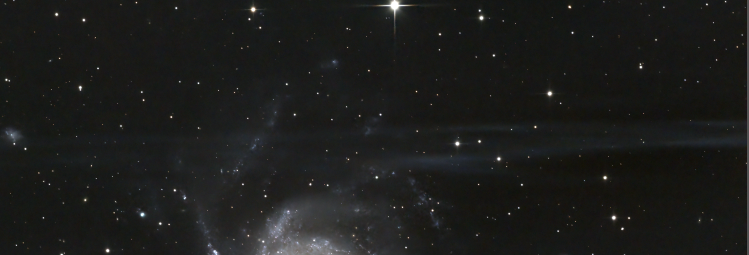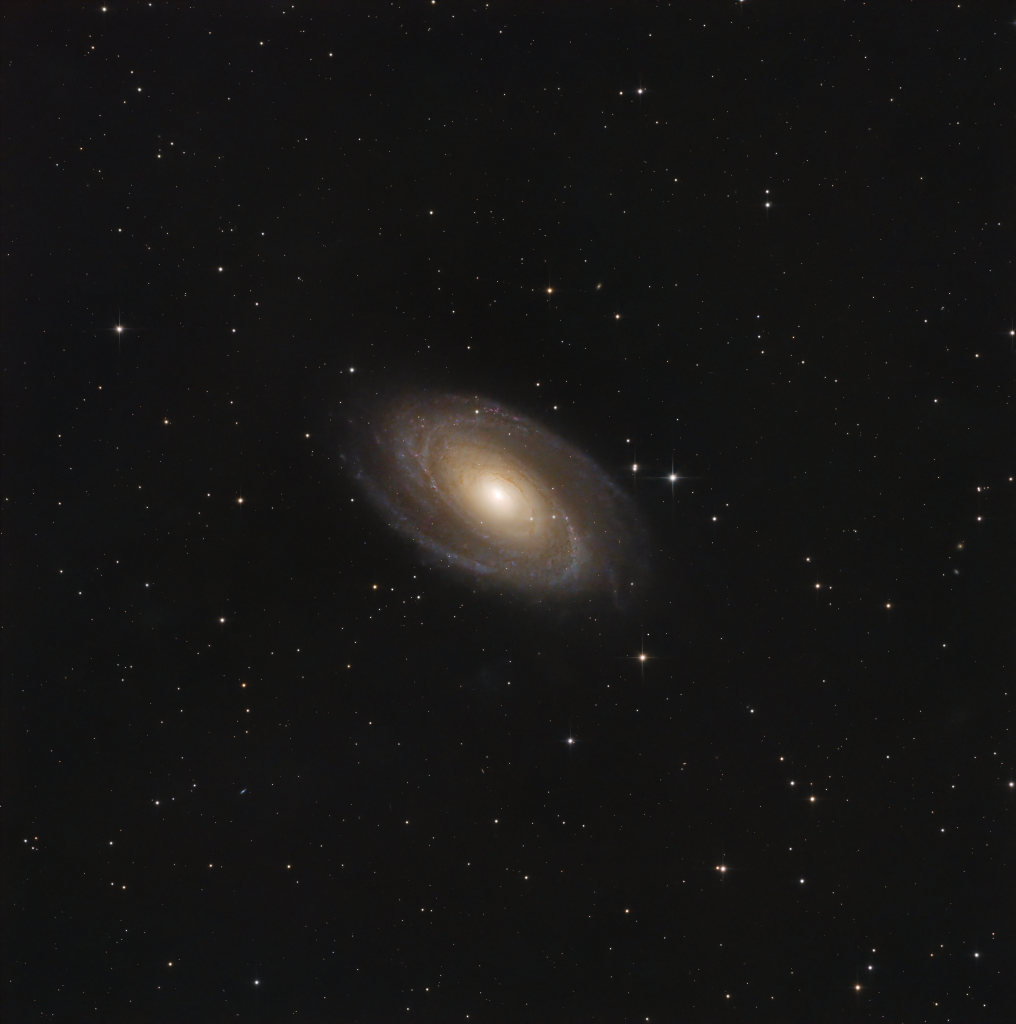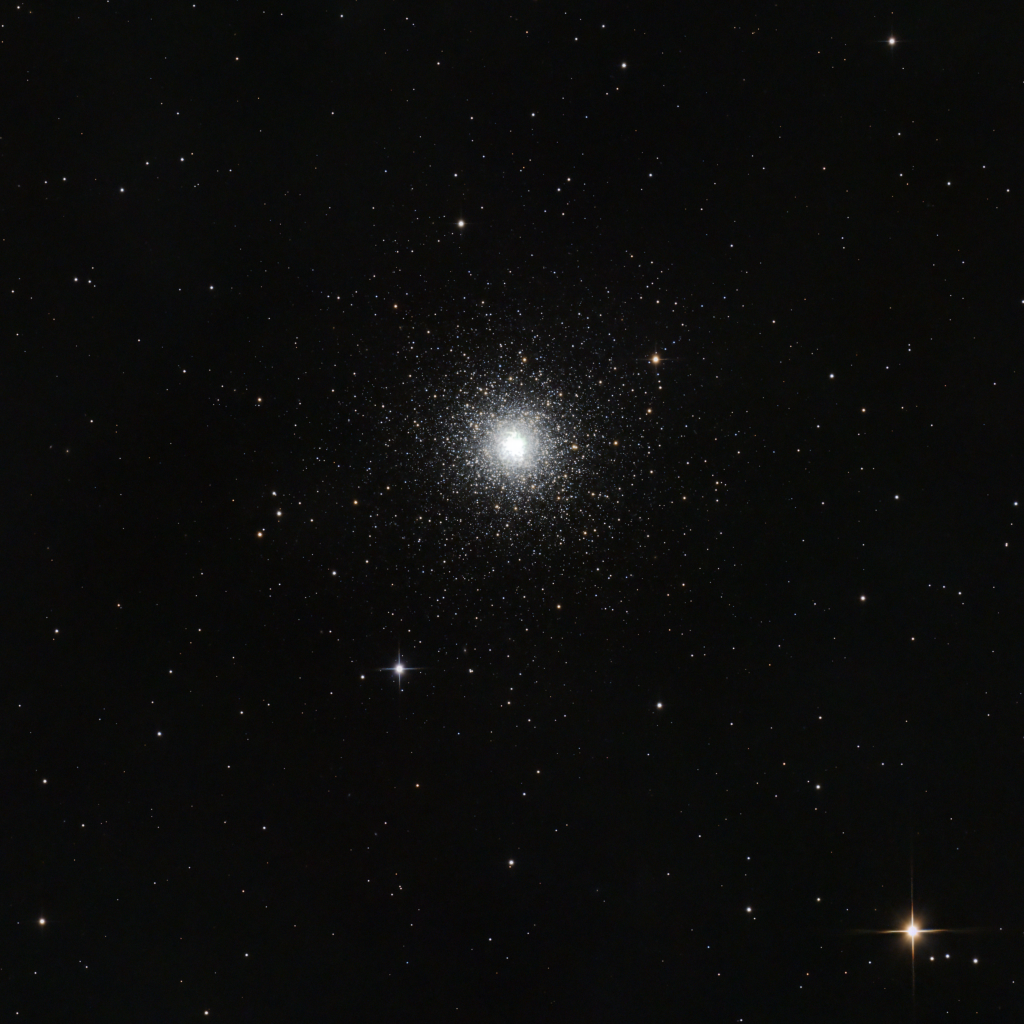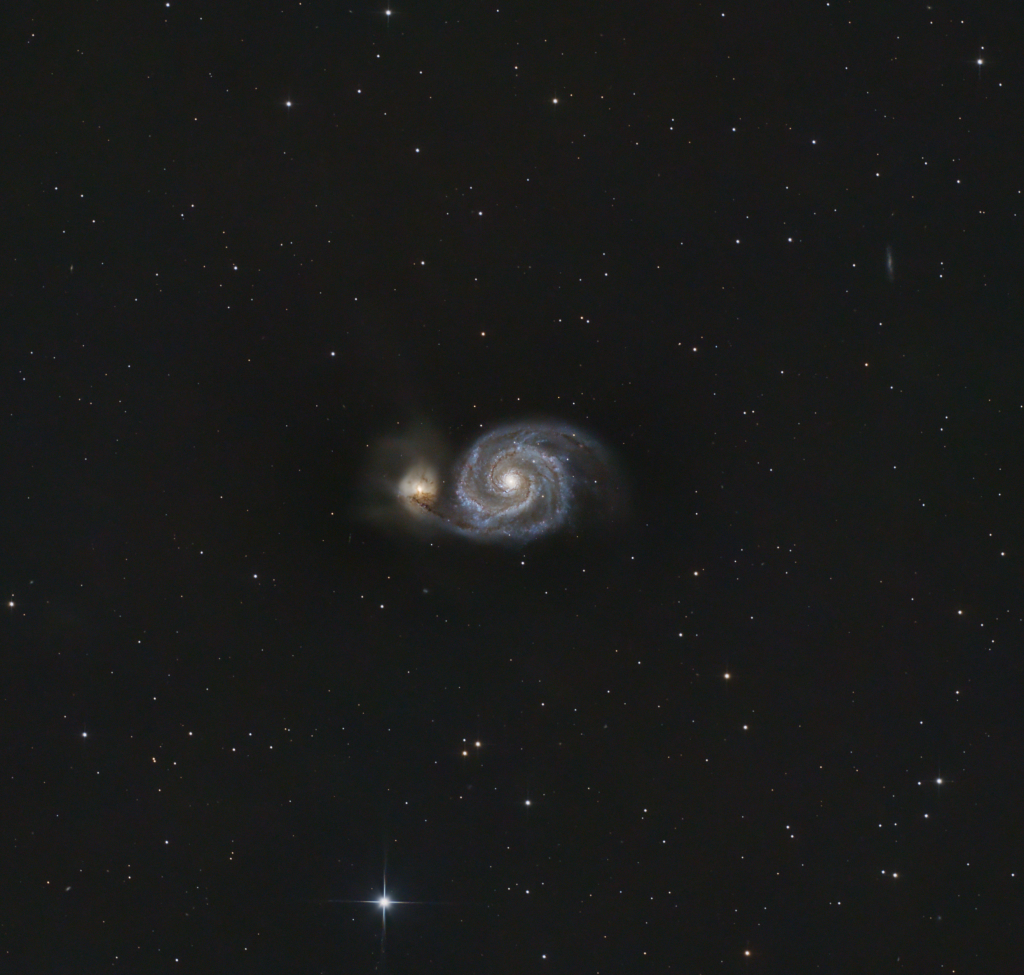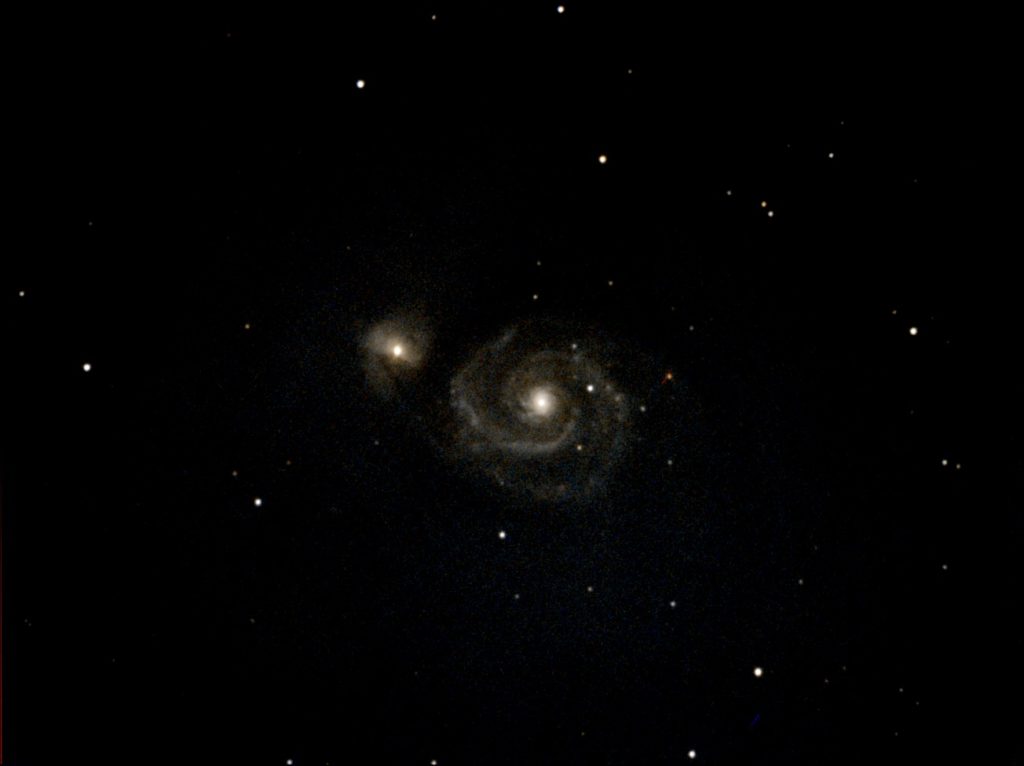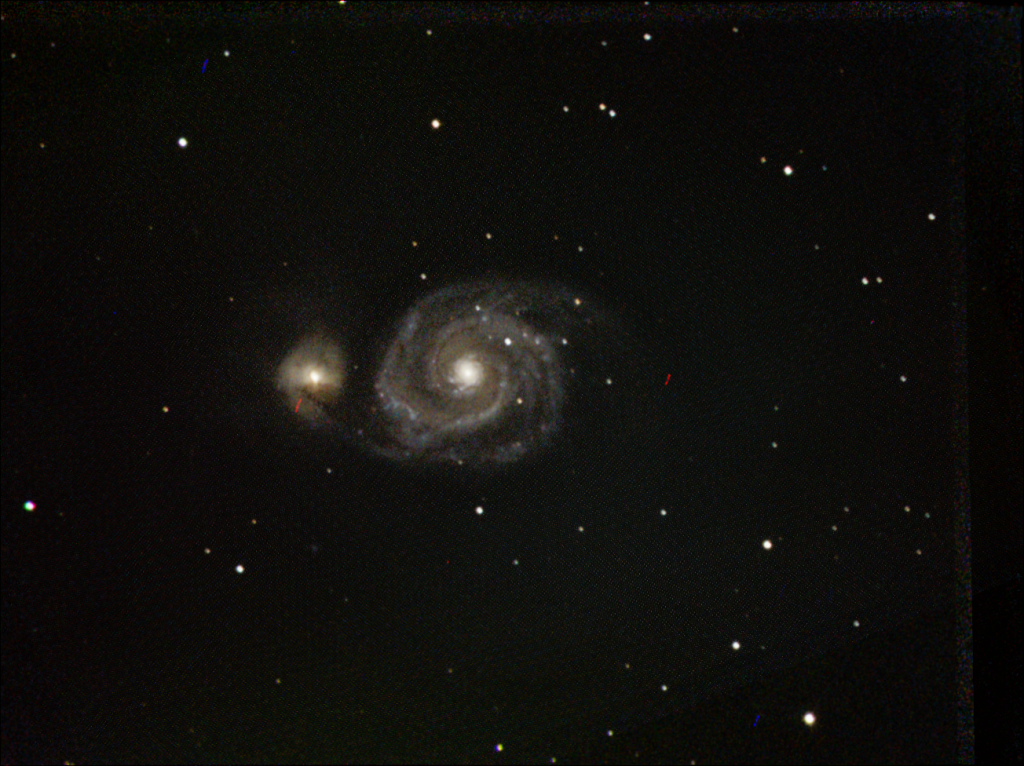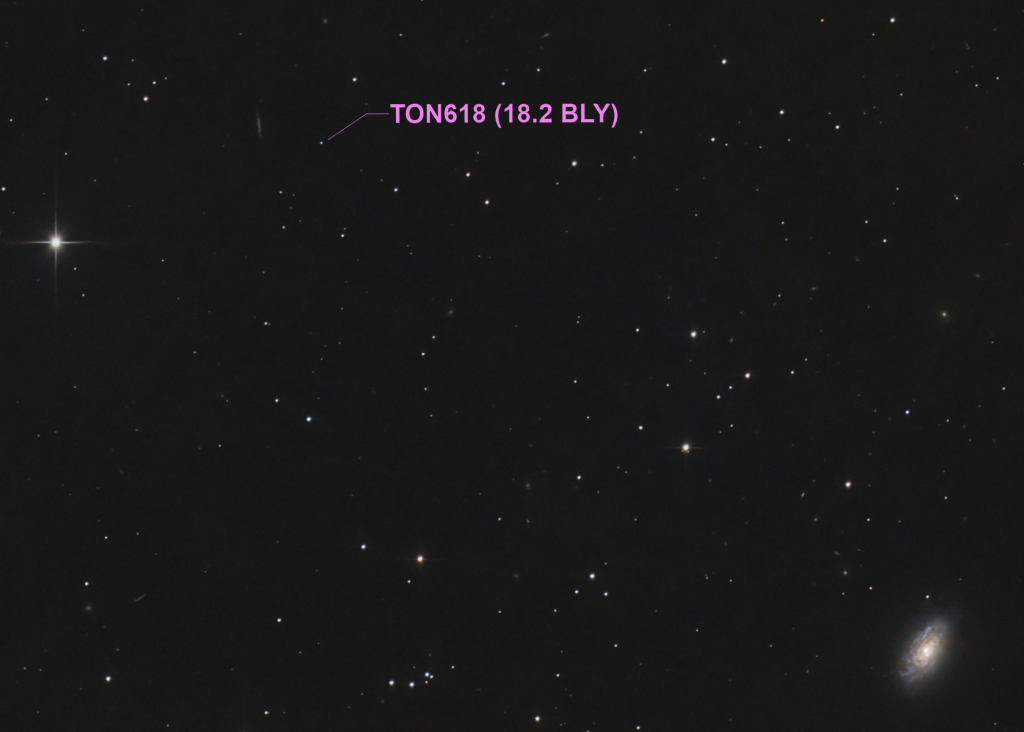The Pinwheel Galaxy
I don’t really like postprocessing that much but it’s a necessary part of astrophotography. I usually try to keep it light. I don’t stretch the image too much, I keep the noise reduction at minimum and whenever possible I try to be as gentle as I can with saturation to keep natural colors alive.
Yesterday I had a try at the Pinwheel Galaxy. It’s not a difficult target, it’s fairly bright, only Andromeda, Triangulum and Bodes are brighter, I believe. But after my meridian flip I noticed some big streaks of light on the image. I think those are reflections of Alkaid, a bright hot star in Ursa Major, outside of the field of view but reflecting through my imaging train. So I had to really carefully process this away, which I don’t like, but anyway. Here’s the result.
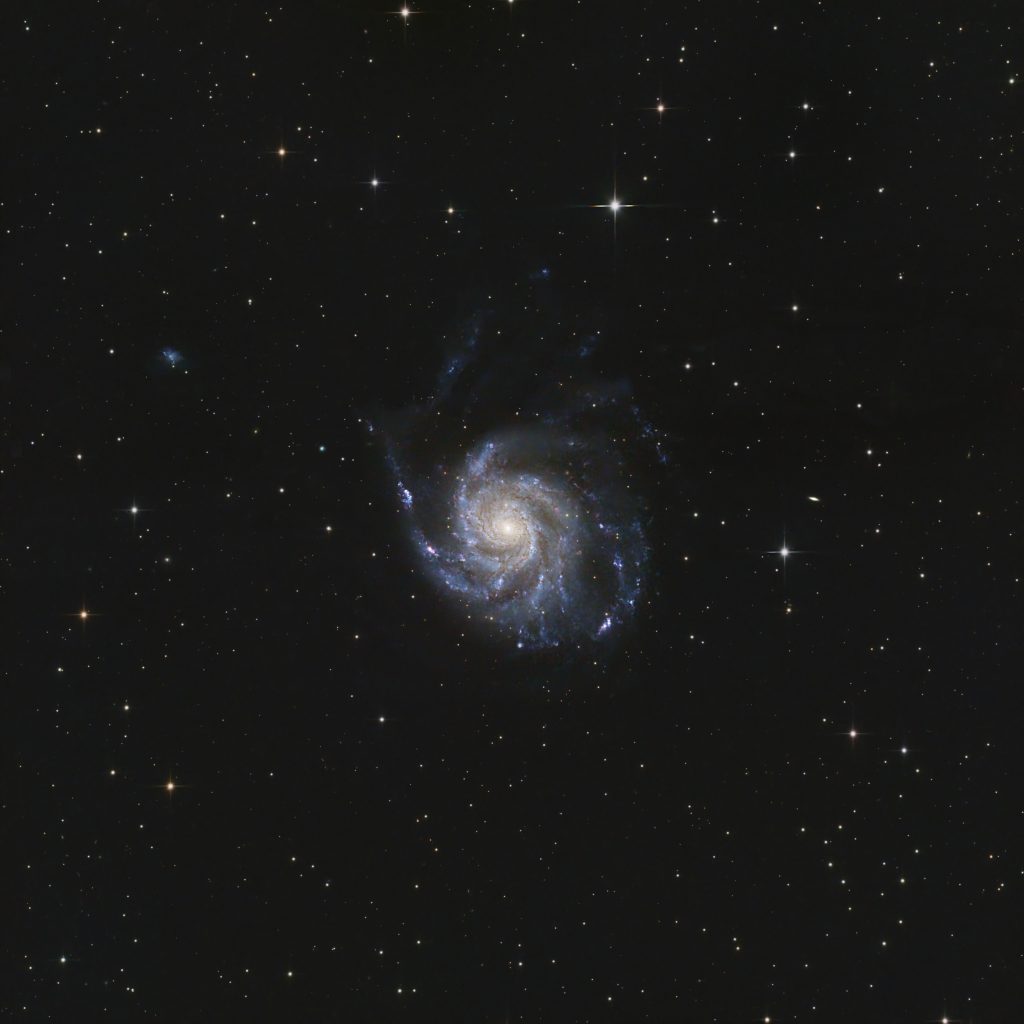
And here are the streaks. I’ll need to have another look at my setup to limit those reflections in the future.
